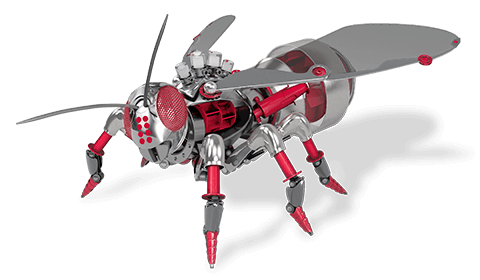Clean resin without streamers and with dust content well below 50ppm is the requirement in today’s marketplace. Many plastic manufactures find it difficult to meet this standard with their existing pneumatic conveying and dust removal systems. One plastic manufacturer reported an accumulation of dust and streamers in its silo farm and asked Pelletron to analyze the problem and to find a solution.
The system review identified a number of contributing factors. In the current system, after extrusion and blending, the PP resin was transferred over a distance of ~850ft (~260m) to the silo farm for truck loading and bagging at the rate of 130,000lbs/h (60t/h). The current dilute phase conveying system transferred the resin using 12” conveying line with 10 long radius elbows. Before final transfer to the storage silos, the material was being cleaned with an elutriator. The elutriator removed short streamers and the remaining dust content <500micron was in the range of 80 to 100ppm. After the elutriator, the PP resin was conveyed into the storage silos using a ~300ft (~90m) long and 115ft (~35m) high dense phase system. The dense phase system used to distribute the resins to the silos created more very fine dust.
In order to determine the dust and streamer content at the silo outlet, 50lbs (25Kg) material samples from silos at various fill levels were analyzed in the Pelletron test lab. The sample from the silo at 100% full had dust levels in the range of 100 to 200ppm and few streamers. The sample at 50% full contained dust levels in the range of 200 to 300ppm and more streamers. The sample taken from the silo with 10-20% material remaining showed very high dust content, up to 1000ppm, and many streamers. This was no surprise, because the dust typically accumulates on silo walls and becomes more concentrated as silos empty.
Pelletron cleaned all three samples in the test lab with a DeDuster®. All streamers were successfully removed from all three samples and the dust level was reduced to <50ppm, measured in accordance with the ASTM D-7486 - 08 Wet Test Analysis. The graph shows the actual results before and after cleaning. Pelletron’s recommendation included installing a mobile XP-540 DeDuster® to clean 110,000lbs/h (50t/h) for the truck loading system and a second mobile DeDuster® for the 25kg bagging station. The customer proceeded with the recommended implementation in two phases with truck loading taking priority over the bagging station.
Next, Pelletron proposed a closed loop system with a wash down DeDuster® for easy cleaning of a variety of PP grades. With this system, the electromagnetic flux field generated by coils at the DeDuster® inlet reduces the electro-static charge at the material surface allowing the micro fine dust generated by the dense phase system to be easily removed. The cleaning air passes over the unique slot and hole pattern of the wash deck and through the Venturi Zone to remove dust and streamers at the highest level of efficiency known in the industry. The air flow in the Venturi Zone is regulated using a bypass air regulator and a portion of the cleaning air is blown-off through a bleed air valve at the back of the DeDuster® in order to generate the necessary negative pressure at the DeDuster® outlet.
Finally, cleaning air flow is provided by a high performance wash/exhaust air fan. Contaminants are continuously separated into a high efficiency cyclone with an inline filter for fine particle filtration. After passing the inline filter, the cleaned air is returned to the DeDuster®. The air volume and pressure of the fan is regulated by the wash air damper or a VFD-drive. The separated dust and streamers are dropped into a dust drum under the cyclone. A sealed slide gate is installed at the dust outlet of the cyclone to simplify changing the dust drum while the system is in operation.
After installation and testing of the Pelletron solution, samples were taken at the outlet of the DeDuster® and analyzed in the Pelletron test lab. All streamers were removed and the dust level was reduced to a range of 30 to 50ppm. The results were very satisfying, and after several weeks of operation, the customer ordered the second DeDuster® for the bagging station.






